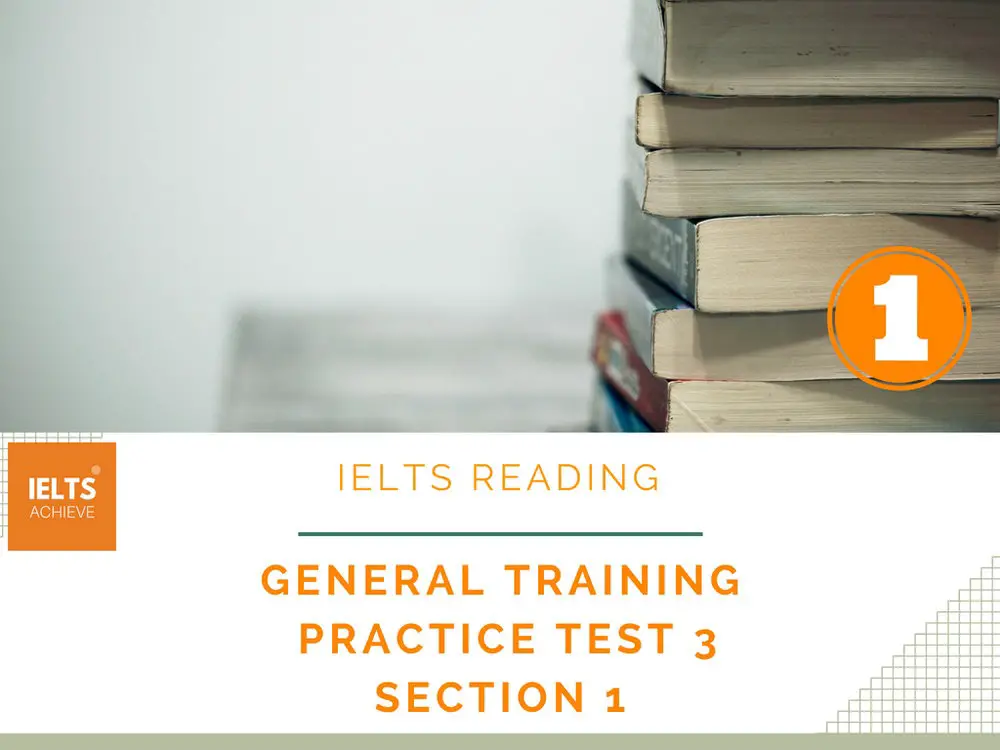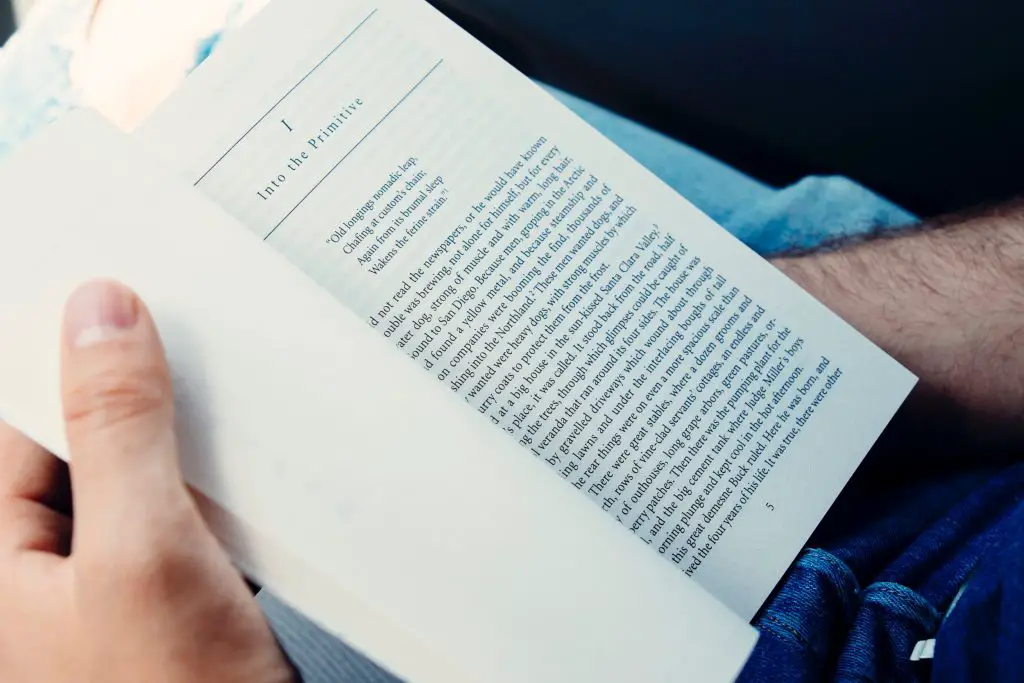
Practice the reading test section below or purchase an easy to print out PDF, which includes all 3 test sections for Reading Test 4 here.
There is also an IELTS General Training Practice Test PDF download that includes all 4 practice tests.
With each test, you get the following >
- PDF for each section of the reading test.
- PDF explaining the reading test band scores.
- PDF example of a reading test answer sheet.
Reading Section 1 – Questions 1-14
This text is from The Telegraph
Read the text below and answer Questions 1-8
The 6 best places to visit in England
A
Yorkshire
Visitors flock to Yorkshire because there is no place on earth like God’s Own County. It considers its food and drink reputation as now the best in Britain. Yorkshire boasts more Michelin-starred restaurants than anywhere else in the country (apart from the clogged streets of London and who wants to go there?).
The sheer beauty of the county, sometimes as unexpected as a dilapidated mill chimney stabbing up through a leaden sky, has inspired generations of painters: from John Atkinson Grimshaw’s moonscapes to the Victorian artists of the Staithes Group to David Hockney’s Yorkshire Wolds.
B
Cotswolds
The glorious, honey-coloured towns and villages of the Cotswolds look as if they have strayed into the 21st century from another era. The area is characterised by gentle dynamism, with lively galleries, vibrant festivals and a liberal endowment of intriguing museums.
Covering nearly 800 square miles across five counties (Wiltshire, Gloucestershire, Oxfordshire, Warwickshire and Worcestershire), this region of ‘wolds’, or rolling hills is the biggest of the 38 Areas of Outstanding Natural Beauty (AONB) in England and Wales.
C
Devon
Craggy coves and cream teas, surf breaks and strolls, picnics and pints in pub gardens – holidays in Devon are wholesome, simple and scenic. Most people are drawn to the magnificent beaches on the south and north coasts, but inland Devon has its appeal, too.
A visit here mixes two of life’s loveliest pleasures: good food and the great outdoors. Devon folk make the most of the rich larder of food on their doorstep. Lamb, venison, pheasant, pork and seafood are staples, and the county’s farmers’ markets are full of artisan producers selling delicious cider, apple juice, cheese and ice cream.
D
Lake District
Visit the Lake District for Britain’s finest scenery, greenest countryside and grandest views. Its picturesque patchwork of lakes, valleys, woodlands and fells make it one of the best places in Britain to get out and experience the great outdoors, whether it’s on a leisurely bike ride down country lanes or a day-long hike across the hills.
The Lake District also has numerous artistic and literary connections, most famously William Wordsworth, who was born in Cockermouth in 1770 and drew much of his poetic inspiration from the surrounding landscape. And while the weather is notoriously unpredictable (locals will tell you it’s not unusual to experience all four seasons in a single day), showers and racing clouds only emphasise the grandeur of the magnificent scenery.
E
Norfolk
Norfolk’s undulating countryside and sleepy, flint-built villages are perfect for gentle cycling, walking or touring by car. Stately homes, ruined castles, medieval churches and half-timbered wool towns with fascinating museums make for enjoyable days out.
Although East Anglia gets less rain than many other holiday destinations in the UK, northerly and easterly winds over the North Sea can keep temperatures low. But even on cold, bright days in winter, the beach car parks can be busy with dog-walkers and hikers.
F
Suffolk
The beaches fringing the curved Norfolk and Suffolk coastline are the chief draw for visitors to the region. Even on the busiest summer’s day, there is always space for games, kite flying or a quiet family picnic in the dunes. It’s also a wild landscape of dense pine forest, open heathland and great expanses of salt marsh.
Birdlife is astonishingly rich, and coastal wildflowers include yellow-horned poppies and purple-flowering sea pea, while the unique wetlands of the Broads, one of England’s 10 designated National Parks, is home to more than 400 rare species, including butterflies, dragonflies, moths and snails.
Questions 1-8
The text above has six descriptions of places to visit in England, A-F
Which description mentions the following information?
Write the correct letter, A-F, in boxes 1-8 on your answer sheet.
NB You may use any letter more than once.
1. Old architecture and cold temperatures.
2. Great beaches and plenty of places to eat good food.
3. Lots of creatures to see here, including birds and butterflies.
4. One of the largest places in England that has phenomenal beauty.
5. You can ride bikes or walk over hills.
6. The home of creative minds and amazing landscapes.
7. The best food can be eaten here.
8. Painters have called this home.
The following text is from www.smallbusinesschron.com
Read the text below and answer Questions 9-14.
Women’s Rights In The Workplace
Women enjoy most freedoms today that men enjoy, and have joined the American workforce in droves to work as doctors, lawyers, teachers, designers, truck drivers and in many other professions. Discrimination against women still exists in various forms, particularly in the workplace. Women should know their rights as U.S. workers and take responsibility for helping to stop rights violations in the workplace.
History
Women have worked in some capacity in the U.S. since its inception, but only in menial jobs for very low pay. During World War I, women entered the workforce in higher numbers due to the shortage of men. It wasn’t until World War II that they went to work in force. During this period, women took positions formerly open only to men; 7 million women entered the workforce, 2 million of those in heavy industry. They still had no formal workplace rights until the passage of Title VII of the Civil Rights Act of 1964. This act states that employers may not discriminate against people on the basis of race, colour, religion, sex or national origin.
Significance
Title VII makes it illegal for employers to exclude qualified women from any available position. Employers would often hire less qualified men for positions to which women had applied. This law empowers women to sue if they feel a potential employer has excluded them from a position based on gender.
President John F. Kennedy signed the Equal Pay Act in 1963, which states that employers must pay women the same amount they would pay a man in the same position. In the past, companies paid women far less than their male counterparts for the same position. Women can sue their employers if they can prove that a male in the same position earns higher wages. Both of these laws significantly increase the status of women in the workforce.
Types
Women’s rights in the workplace include many facets, such as the right to work if pregnant. An employer cannot exclude a woman from a position due to pregnancy as long as she can perform satisfactorily. Employers cannot refuse to hire any person due to marital status, gender or age.
In addition, an employee of any company where a woman works may not sexually harass the woman in any way. This includes a hostile work environment where the woman must endure sexual comments, touching or materials, as well as unwanted sexual advances that put her in fear of losing her job if she does not comply. Women should report all advances of this sort to the Equal Employment Opportunity Commission or a supervisor.
Benefits
Because of workplace rights, women enjoy the freedom to work in almost any position they choose. They join the armed forces, work as cab drivers, own businesses and become executives in large corporations. As the financial status of women increases, so does the welfare of their families, children and the nation.
Considerations
According to Sexual Harassment Support, a nonprofit support group for victims of sexual harassment, only 5 percent to 15 percent of victims of workplace sexual harassment report these violations to their employers or proper authorities for fear of ridicule, losing their jobs or not being believed. All victims of sexual harassment should seriously consider reporting it. Taking this step protects America’s workforce from workplace rights violations.
Questions 9-14
Do the following statements agree with the information given in the text above?
In boxes 9-14 on your answer sheet, write
- True – if the statement agrees with the information
- False – if the statement contradicts the information
- Not Given – if there is no information present
9. During world war 2 there were more women working than men.
10. Women now earn at least 10 times more than men in certain roles.
11. Discrimination towards women still happens in the present day.
12. A small number of women report sexual harassment in the workplace.
13. Women have no rights to work if they are pregnant.
14. Women are the highest paid CEO’s in the USA.
For help to answer these questions with practice please read the posts below >>
General Training Reading Band Scores
We hope you found this post useful in helping you to study for the IELTS Test. If you have any questions please let us know in the comments below or on the Facebook page.
The best way to keep up to date with posts like this is to like us on Facebook, then follow us on Instagram and Pinterest.
If you need help preparing for the IELTS Test, join the IELTS Achieve Academy and see how we can assist you to achieve your desired band score. We offer an essay correction service, mock exams and online courses.
Answers >
Questions 1-8
1 – E
2 – C
3 – F
4 – B
5 – D
6 – D
7 – A
8 – A
Questions 9-14
9. False
10. Not Given
11. True
12. True
13. False
14. Not given

